Today’s Current Affairs: 2nd September 2025 for UPSC IAS exams, State PSC exams, SSC CGL, State SSC, RRB, Railways, Banking Exam & IBPS, etc
Table of Contents
Dhauliganga Hydroelectric Project:

Nineteen workers and officials of the NHPC were rescued after they were trapped inside the tunnel of the 280 MW Dhauliganga hydroelectric project in Pithoragarh’s Dharchula area for almost 22 hours recently.
- It is a 280 MW hydropower project located on the Dhauliganga River near Dharchula in the Pithoragarh district of Uttarakhand.
- The Dhauliganga River is one of the prominent tributaries of the Alaknanda River, which is a key component of the Ganga River system.
- The project construction commenced in 2000 and subsequently entered into commercial operation in 2005.
- The project is currently owned by the National Hydroelectric Power Corporation (NHPC).
- It is a run-of-river project.
- It consists of a concrete-faced rock-fill embankment dam with a height of 56 meters and a length of 315 meters.
- The hydro reservoir capacity is 6.2 million cubic meters.
- The gross head and net head of the project are 310 m and 297 m, respectively.
Bordeaux Mixture:

Planters in the Chikkamagaluru and Hassan districts of Karnataka are gearing up to apply Bordeaux mixture for the third or fourth time this year, following earlier crop damage caused by unseasonal rainfall.
- Bordeaux mixture is a bactericide and fungicide made by mixing copper sulfate and lime (calcium hydroxide) with water.
- Discovered in the late 19th century in France’s Bordeaux region, from which it takes its name, Bordeaux mixture has stood the test of time and continues to be a reliable solution for disease management, particularly in organic farming systems.
- This mixture is especially effective in controlling fungal and bacterial diseases in various crops such as fruits, vegetables, and plantation crops.
- It has a low aqueous solubility and is not volatile.
- It persists in rainy weather and can provide long-lasting protection against a variety of diseases.
- Bordeaux mixture is usually applied after harvest, before rainy weather starts.
- Additionally, because it contains copper, it has a multi-site mode of action and may be a particularly useful spray in a pesticide resistance management program.
- However, applying Bordeaux mixture to newly growing leaves, however, can cause injury to the new growth.
Exercise Yudh Kaushal 3.0:

The Indian Army recently conducted Exercise Yudh Kaushal 3.0 in the high-altitude Kameng region of Arunachal Pradesh.
- It was conducted by the Indian Army in the high-altitude Kameng region of Arunachal Pradesh.
- The exercise demonstrated an impressive integration of advanced technology, operational innovation, and professional expertise by the troops.
- The large-scale manoeuvres highlighted the Army’s capability to operate across multi-domain environments, with demonstrations including drone surveillance, real-time target acquisition, precision strikes, air-littoral dominance, and coordinated battlefield operations.
- A key feature was the operational debut of the newly raised ASHNI platoons, showcasing how next-generation technology, combined with proven tactical experience, can provide a decisive advantage in both current and future conflicts.
- A unique aspect of Exercise Yudh Kaushal 3.0 was the active involvement of the Indian Civil Defence Industry, reflecting India’s ongoing “Decade of Transformation.”
- The exercise validated the Army’s readiness to operate in high-altitude, harsh climatic conditions and reaffirmed its commitment to integrating emerging technologies, including unmanned systems, precision weaponry, and multi-domain operational strategies.
Dioscorea balakrishnanii : Edible Tuber
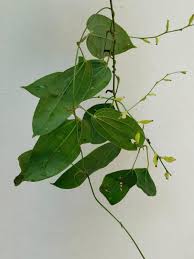
Researchers from Kerala have identified an edible tuber and named it as Dioscorea balakrishnanii.
- It is an edible tuber found in the Western Ghats region of Wayanad district of Kerala.
- It is a new species of the genus Dioscorea.
- This yam species is locally known as ‘chola kizhangu’among the Kattunayikar tribes of Wayanad. The tubers are edible when cooked and are said to have an excellent flavour
- It is found only in the sholas of evergreen forests.
- Since there are male and female varieties, Dioscorea balakrishnanii was continuously observed for the last ten years and the differences in the flowers have been recorded.
- The Wayanad region of the Western Ghats is rich in unique wild tubers, relatives of the commonly cultivated tubers known as kachil or kavat (purple yam).
- These belong to the plant family Dioscoreaceae and 23 different forms of more than 14 species.
- The discovery of this new tuber is of significance for the conservation of unique ecosystems and unique wild relatives as well as food security and the medicinal sector.
- The species holds potential as a tuber variety for food security and cultivation as a food crop with low glycemic index.
Mira Stars:
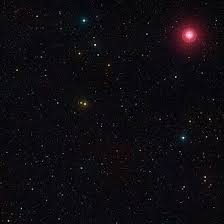
The most precise determination of the expansion rate of the universe was made using cool, giant variable stars ‘Mira’ by the scientists from Inter-University Centre for Astronomy and Astrophysics (IUCAA).
- Mira, also known as Omicron Ceti, is a star that remarkably changes its brightness over time, in a regular pattern.
- The name, Mira, means “the wonderful” in Latin, and it lived up to that name by becoming the prototype for an entire class of stars known as Mira variables.
- With the variability first measured by astronomers in the 17th century, Mira was the first known example of a “variable star”—a star that doesn’t shine with a constant brightness.
- Mira variables are a type of giant star that go through regular cycles of expanding and contracting.
- These cycles cause their brightness to vary in a predictable way, typically over periods ranging from 100 to 1,000 days.
- These stars are relatively cool, with surface temperatures around 3,000 Kelvin (about half the temperature of the Sun’s surface), and they are in the late stages of their life.
- One of the most important things about Mira variables is that there is a strong relationship between how bright they are and how long their pulsation cycles last.
- This relationship allows astronomers to use them as “standard candles.”
- A standard candle is an object in space whose true brightness is known. By comparing how bright the object appears from Earth to how bright it actually is, scientists can calculate how far away it is.
- This is a key method used to measure distances in the universe, forming part of what astronomers call the “extragalactic distance ladder.”
Blue Sea Dragon:
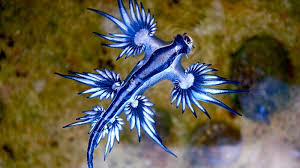
Several beaches in Spain were forced to shut down after an unusual invasion of blue sea dragons.
- The blue dragon (Glaucus atlanticus) is a type of mollusk known as a nudibranch.
- They also are known as blue sea slugs, blue angels, and sea swallows.
- It can be found drifting on the surface of the Atlantic, Pacific and Indian oceans in temperate and tropical waters.
- They feed on venomous siphonophores such as the Portuguese man-o-war and bluebottle, which also occur in ocean surface waters.
- When a blue sea dragon consumes its venomous prey, it doesn’t just digest the toxins. Instead, through a complex biological process, it transports the stinging cells or nematocysts from its digestive system to specialised finger-like projections called cerata on its back and sides.
- They incorporate these cells into multiple finger-like structures protruding from their body which provides them with a potent form of protection from predators.
- The slug isn’t venomous all on its own, however, it stores the stinging nematocysts created by the creatures on which it feeds.
- Its sting can cause problems, especially to children and elderly.
- One sting from this little creature can lead to nausea, pain, vomiting, acute allergic contact dermatitis, and post-inflammatory hyperpigmentation.
- They are hermaphrodites, meaning they have both male and female reproductive organs.
Ramon Magsaysay Award, 2025:

The Ramon Magsaysay Award, 2025 has been announced for ‘Educate Girls’, an Indian organisation that works to educate unprivileged girls across the country.
- Ramon Magsaysay Award is Asia’s premier prize and highest honor, celebrates greatness of spirit and transformative leadership in Asia.
- The Awardees, annually selected by the RMAF board of trustees, are presented with a certificate and a medallion with an embossed image of Ramon Magsaysay facing right in profile.
- From 1958 to 2008, the Award was given in six categories annually:
- Government Service: To recognize outstanding service in the public interest in any branch of government, including the executive, judicial, legislative, or military;
- Public Service: To recognize outstanding service for the public good by a private citizen;
- Community Leadership: To recognize leadership of a community toward helping the disadvantaged have fuller opportunities and a better life;
- Journalism, Literature, and Creative Communication Arts: To recognize effective writing, publishing, or photography or the use of radio, television, cinema, or the performing arts as a power for the public good;
- Peace and International Understanding: To recognize contributions to the advancement of friendship, tolerance, peace, and solidarity as the foundations for sustainable development within and across countries.
- Emergent Leadership: To recognize an individual, forty years of age or younger, for outstanding work on issues of social change in his or her community, but whose leadership may not yet be broadly recognized outside of this community.
- The winners are presented with a certificate and a medallion with an embossed image of Ramon Magsaysay.
- It is presented in formal ceremonies in Manila, Philippines on August 31st, the birth anniversary of the much-esteemed Philippine President whose ideals inspired the Award’s creation in 1957.
Revised methodology for calculating Green Credit for tree plantation:
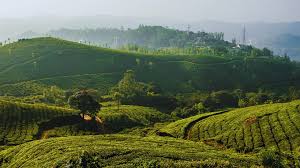
The Environment Ministry released a revised methodology for calculating Green Credit for tree plantation.
- Green Credit is a market-based incentive mechanism under the Green Credit Programme (launched Oct 2023) to reward voluntary eco-friendly actions like tree plantation, mangrove restoration, sustainable farming, water conservation, and waste management.
- Credits act as measurable rewards for positive environmental outcomes.
- Aim:
- Encourage voluntary participation of industries, cooperatives, and communities in ecological restoration.
- Shift from tree-counting to ecological improvement (survival + canopy density).
- Link corporate obligations (CSR, afforestation compliance) with long-term ecological benefits.
Key Features:
- Credits awarded only after 5 years of restoration, ensuring tree survival and growth.
- 40% minimum canopy density required for issuance.
- 1 Green Credit = 1 tree surviving beyond 5 years.
- Credits are non-tradable & non-transferable, except within holding–subsidiary companies.
- Can be exchanged once only for compensatory afforestation, CSR compliance, or project-linked obligations; extinguished after use.
- Verification by designated agencies, with applicant paying a verification fee.
- Projects initiated under 2024 rules will continue under old provisions.
Bhairav Commando Battalions:

The Indian Army is raising the first five ‘Bhairav’ commando battalions to strengthen swift strike capabilities along the borders with China and Pakistan.
- It is Newly raised light commando battalions (250 soldiers each) under the “Save and Raise” approach.
- Drawn from existing infantry battalions without fresh troop accretion.
- Complements the Army’s 10 Para-SF and 5 Para (Airborne) battalions.
- Objective is to Enhance swift strike capability along critical borders with China and Pakistan.
- Relieve Para-Special Forces so they can focus on strategic, high-risk missions behind enemy lines.
- Provide rapid, high-impact response in evolving battlefield conditions like drone-saturated environments.
- Features:
- Each unit: ~250 soldiers, 7–8 officers.
- Training: 2–3 months in regimental centres + 1 month with Special Forces for advanced training.
- Equipped with latest weapons, drones, surveillance systems, and tactical gadgets.
- Agile and nimble: Smaller than infantry (800) and Para-SF (620), but optimized for mobility and flexibility.
- Initial 5 units—3 in Northern Command (Leh, Srinagar, Nagrota), 1 in western desert sector, 1 in eastern hilly terrain.
Nauru:
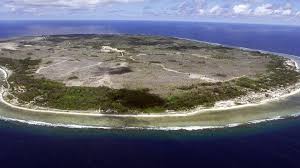
Australia has signed a $267 million deportation deal with Nauru to relocate non-visa holders, sparking criticism from refugee and human rights groups.
- It is officially the Republic of Nauru, a sovereign island country and microstate in the South Pacific Ocean.
- It is Known historically as “Pleasant Island.”
- Located in Micronesia subregion of Oceania.
- About 300 km west of Banaba (Kiribati).
- Capital: Yaren District (de facto capital, as Nauru has no official capital).
- Surrounded by the Pacific Ocean; nearest land is Banaba (Kiribati).
- Australia–Nauru Agreement (2025):
- Australia will pay A$408 million ($267M) upfront and A$70M annually after deportees arrive.
- Targets individuals released after Australia’s 2023 High Court ruling ending indefinite immigration detention.
- Criticised as violating international refugee protections.
Exercise Bright Star 2025:
Indian Armed Forces personnel are participating in the 19th edition of Exercise Bright Star 2025, which is being held in Egypt. It is a biennial multilateral military exercise, recognized as one of the largest and longest-running tri-service drills in the Middle East–North Africa (MENA) region. Hosted by Egypt in partnership with the US since 1980, it has evolved from a bilateral US-Egypt initiative into a full-scale multilateral military exercise. It aims to enhance jointness and interoperability among participating nations, promote regional peace, security, and stability, and strengthen multi-domain warfare preparedness through joint training.
Gangotri Glacier Decline:
A recent study (IIT Indore, ICIMOD, US universities) reconstructed the hydrological discharge of the Gangotri Glacier System (GGS), showing shifts in meltwater trends due to climate change. The Gangotri Glacier System (GGS) is a major source of the Bhagirathi River, a key tributary of the Ganga. Comprises Gangotri, Chaturangi, Raktavaran, and Meru glaciers; ~549 km² area, ~48% glacierised. Earlier peak discharge → risk of water scarcity in late summer/autumn for downstream communities. Leads to Greater flood vulnerability in July with intense monsoon rains.
Singapore Named Asia’s Safest Country in 2025 GPI:
In the latest Global Peace Index (GPI) 2025, Singapore has been ranked the safest country in Asia, securing the 6th position globally. Released by the Institute for Economics and Peace (IEP), the 19th edition of the index assessed 163 countries on parameters such as safety, conflict, and militarisation. Despite slipping one spot from 2024, Singapore’s overall peace score improved, reflecting its continued commitment to maintaining social stability and public safety.
The Global Peace Index is a leading measure of global peace and security, based on 23 indicators across categories like,
Societal safety and security
Ongoing domestic and international conflict
Degree of militarisation
These indicators are weighted and combined to generate a score—lower scores signify higher peace levels.
India’s Satwik-Chirag duo defeat Chia-Soh:
India’s top men’s doubles badminton pair, Satwiksairaj Rankireddy and Chirag Shetty, defeated their long-time rivals Aaron Chia and Soh Wooi Yik of Malaysia to enter the semifinals of the BWF World Championships 2025. This hard-fought victory came almost exactly a year after the Indian duo’s heartbreaking Olympic loss to the same opponents in Paris, making the win not just significant, but deeply personal.
Govt Notifies 100% FDI Plan for Insurance Sector:
The Ministry of Finance has issued a notification to facilitate 100% Foreign Direct Investment (FDI) in the insurance sector. This initiative, once approved by Parliament, will replace the current 74% cap, potentially transforming India’s insurance landscape and attracting greater foreign capital.
The new policy is outlined in the Indian Insurance Companies (Foreign Investment) Amendment Rules, 2025, which proposes,
Replacing the 74% FDI cap with provisions “as stipulated by the Insurance Act, 1938”
Allowing 100% FDI via the automatic route, subject to verification by the Insurance Regulatory and Development Authority of India (IRDAI)
This regulatory change marks a strategic shift in India’s approach to foreign investment in insurance, aimed at unlocking capital, boosting innovation, and improving global competitiveness.
India Set to Become Third Largest Economy In World:
RBI Governor Sanjay Malhotra credits Jan Dhan Yojana and 7.8% GDP growth for India’s upcoming leap to the world’s third-largest economy. Jan Dhan Yojana launched 11 years ago by the Government of India and the RBI, the Jan Dhan Yojana aimed to ensure that every Indian had access to a basic bank account. According to Governor Malhotra, the scheme has successfully opened 55 crore bank accounts, offering a range of financial services including,Savings accounts, Pension schemes, Credit access, Insurance coverage
Private Sector Capex to Jump 21.5% in FY26: RBI
India’s private sector capital expenditure (capex) is projected to grow by 21.5% to reach ₹2.67 lakh crore in FY2025–26, according to a recent article published in the RBI’s August 2025 bulletin. This anticipated increase signals a renewed momentum in private investment, particularly in infrastructure and greenfield projects, backed by strong economic fundamentals, policy easing, and better corporate financial health.
ICC partners with Google to boost global engagement and accessibility in women’s cricket:
The International Cricket Council (ICC) has announced a strategic partnership with Google. This collaboration aims to enhance fan engagement, improve digital accessibility, and fuel the growth of women’s cricket worldwide, particularly in the lead-up to the ICC Women’s Cricket World Cup 2025 and the Women’s T20 World Cup 2026.The ICC-Google partnership comes at a pivotal time, as interest in women’s cricket surges across both traditional and emerging markets. This alliance is set to transform the fan experience, integrating cutting-edge digital solutions into how audiences interact with the game.
PM Modi Gifts Japanese PM Ramen Bowls, Shawl:
During his recent two-day visit to Japan, Prime Minister Narendra Modi presented a series of culturally rich and symbolic gifts to his Japanese counterpart Shigeru Ishiba and his spouse. These gifts showcased the deep-rooted connection between Indian craftsmanship and Japanese tradition, reinforcing the civilizational and spiritual bonds shared by the two nations.
National Nutrition Week 2025:
India will observe National Nutrition Week (NNW) 2025 from September 1 to 7, focusing on the theme “Eat Right for a Better Life.” The week-long campaign highlights the importance of balanced diets, mindful eating, and prevention of malnutrition and lifestyle-related diseases. Coordinated by the Ministries of Health & Family Welfare and Women & Child Development, the initiative aims to foster nutrition education at the community, school, and household levels, aligning with India’s broader mission of achieving a healthier future through programs like POSHAN Abhiyaan.
Odisha Ranks 5th in E-Bus Adoption:
Odisha is emerging as a green mobility leader, ranking fifth in India in terms of electric bus adoption. With 450 e-buses currently in operation, the state plans to more than double its fleet in the coming years as part of its clean transport initiative. This move aligns with India’s broader efforts to promote eco-friendly urban transport under central government support schemes.




